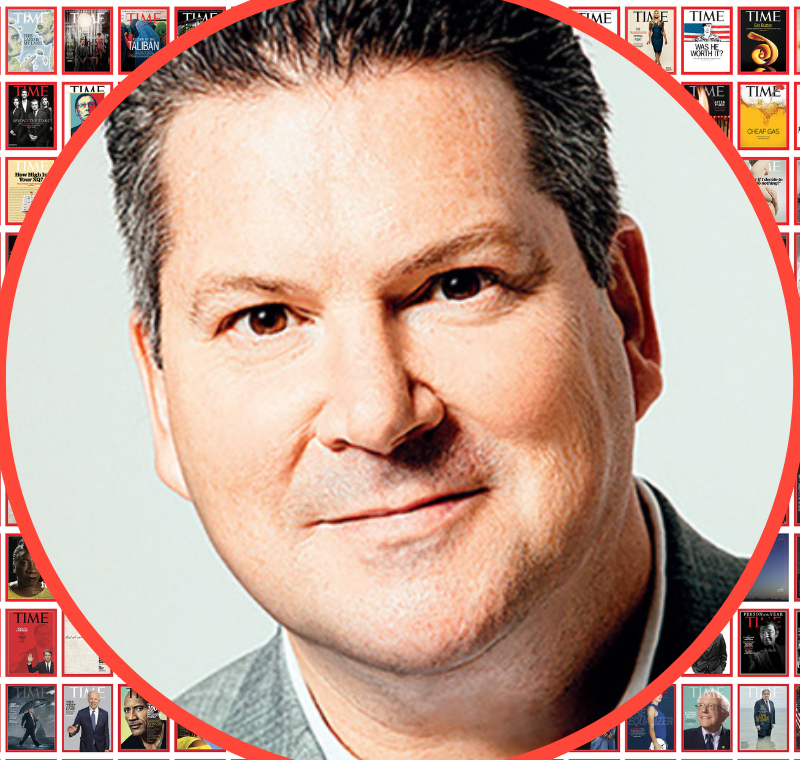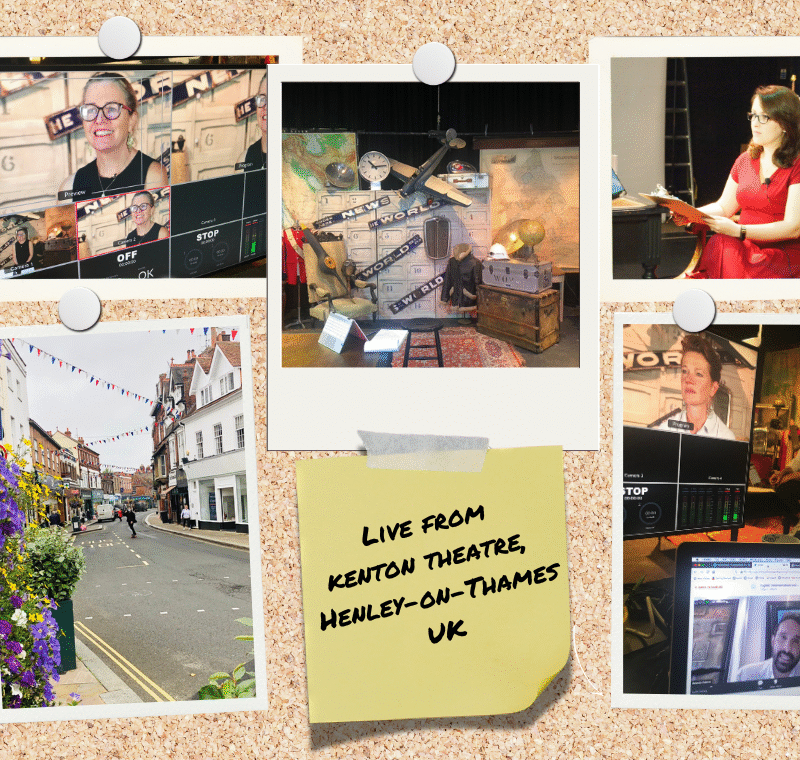Using the ‘power of questions to make audiences partners, win trust, increase ROI’
<br class=”k-br” />A question Jennifer Brandel, co-founder and CEO of Hearken, has been obsessing about “for about a decade”, is how newsrooms can know that they’re valuable to their audiences before they report rather than question “how audiences can be valuable to newsrooms” which is what “a lot of people are actually obsessed with.”
It is a question that is “especially important at this moment, when attention is at a premium and everyone is distracted by everything but the news,” Jennifer said in her presentation at the recent Digital Innovators’ Summit in Berlin, which was rated as one of the top sessions by DIS delegates in a post event survey.
We listened to her presentation again, capturing most of what she said below (if you prefer watching the video of her session, it is here. Her presentation slides are here).
The current news model
The model most newsrooms currently follow according to Jennifer is this:
Firstly, a small group of people make decisions (editors) for a very large group of people (audience). “They kind of have to guess that what they will be making is going to be valuable” to the audience. The problems here are:
- “Most newsrooms do not demographically represent they types of people they want to serve. So right there, if you’re going to have imperfect inputs, you’re going to have imperfect outputs.”
- “Another part is you don’t know until after you’ve done the expensive part, the reporting, creating the work, putting it out in the world, and waiting until when the metrics roll in to see if it was actually valuable.”
Regarding metrics, Jennifer made the point that a lot of newsrooms do not know what they’re actually going to do with captured data. Besides that, various factors coming together in a “magic moment” could play a role in performance. Metrics won’t tell you what that precise magic moment was. “So this still involves a lot of guesswork, looking at the metrics that come into the newsroom.”
Secondly, this leads to newsrooms wanting to get “more data, big data, scraping the Internet, listening, trying to figure out what’s about to trend or already trending and taking advantage of that.” A problem that arises with this is that all newsrooms end up “reporting the exact same thing… Suddenly we’re all reporting the same stories, and the echo chamber just gets worse and worse.”
Putting the public first, instead
Given those options, “creating real value is difficult,” said Jennifer. “But I am here to say, there is a way to know, before you report stories, that your stories are going to be valuable to your audience. And you don’t necessarily have to guess.”
She told how, for the past five years, she has been working on a “public parrot” model where the above is possible. “It just requires putting the public first, instead of last. This is deceptively simple.”
Too often, audience participation is often the last thing people think about when planning stories, and when the audience comes into play, it is often after the fact with things such as commenting on stories.
“Another way to look at this is that newsrooms are trying to yell from the top of a hill”, shouting, “Hey, this is what we think you need to know. Meanwhile the world has changed and no one is sitting at the bottom of the hill waiting for the newsroom to put out their story. They are on their phones or looking at other things”.
The solution is inverting the model. “So instead of ending with the public after you’ve already made your decisions, it’s bringing the public in as early as possible” in the storytelling process.
Sharing power with the audience – a model
The model starts “with the most important thing, your audience’s questions. What is the information they cannot find in the world because it hasn’t been produced yet?” What is it that “your newsroom could provide for them that could create real value? The question here then is, ‘what do you not know, audience, that we could help you find the answer to?’”
The approach offers “a very democratic type of engagement, because everybody is curious. Not everybody in the world has amazing story ideas, but everyone has amazing questions. And so questions themselves are a very magical form of engagement… A question is really a story assignment in disguise.”
Taking this a step further, newsrooms can also “curate the best questions that come in, and allow the public to vote on their favourite. And then you can also allow the person whose question is being answered, to be part of that storytelling process.”
The model “is not about giving up any editorial control … you’re just sharing some of the power you have with people who would love to have some of it. What we’ve learnt is that every time you share that power, you get new powers in return. It is not a zero sum game.
“So if you share ‘the power of asking’ with your audience, what you get is a continuous stream of fresh story ideas and more diverse perspectives than you would typically have around your editorial table.”
It is about “allowing the public to be present with you around the table at the moment you’re making those decisions. And then, when you share ‘the power of assignment’ (i.e. story ideation) with the public, what you get is targeted authentic marketing from the people who are participating.
A further potential part of the model, according to Jennifer, “is sharing the power of reporting with the person’s whose question [a reporter] was answering” – an example being a person who asked the question then going out with the reporter to an interview. It becomes an “experience” for them, Jennifer explained.
User testing for journalism…
Referring to other industries, she made the point that this approach is no other than user testing. “Making sure that whatever product you’re going to put out in the world is actually workable and designed for the person that you’re making it for. Journalism doesn’t do a lot of user testing on its stories beforehand, but this is a way you can do it.”
According to Jennifer experience has shown this to be an approach that works for any type of story, from breaking news to follow-ups to feature writing, and more. “And we’ve seen this grown as we (i.e. Hearken) grew from three partners to more than eighty around the world, in eleven countries and as many languages as well.”
Based on their experiences working with partners from around the world, stories that come from audience curiosity (asking their questions) perform far better than other stories (quoting a 3rd party study by KQED, Jennifer says stories from audience questions performed as much as 11x better than others).
“These stories at the end of the day sit at the intersection of very deep and meaningful audience engagement that yields original, popular content and then over time, very importantly, generates data.” It includes “email addresses and leads for organisations, whether or not it’s for subscription models or paid models or whatever other ways you might monetise.”
* For a real life example from KQED radio in San Francisco of how this works, watch the video of Jennifer’s session at DIS on FIPP’s YouTubechannel (Jennifer discusses the example from 09:08 to 10:55 in the video). A reminder that you can download her presentation slides here to follow along with the video.
‘Change is hard, but the upsides are real’
Jennifer believes there needs to be a change from the “extractive process – what we can get from our audience, how can we make them click on things or how can we make them do things for us, and this transactional mindset.” Instead, newsrooms should look at the audience “with a relational mindset. What could we do for them that would be so helpful to them that they want to come back to us?”
The most difficult part for Jennifer and her team in the past 18 months have been, like so often with anything involving change, a mindset problem. It is “not easy to have journalists start thinking differently about who they are in relation to who they’re serving.”
Yet, there are “real” upsides for media companies involving the public at an earlier and deeper level, over and above getting better stories. “We’ve found that putting your audience at the centre of your model, the value follows… (On the business side, for example) getting much higher ad rates by putting ads at the point where these people are engaging, newsrooms making a ton of money selling sponsorships on this kind of content…”
For the public, in turn, “it’s empowering them to make change in their communities (Jennifer gives examples in the video, at 14:24 to 15:37).” Moreover, by putting them at the centre of the model, media “earn back trust … Suddenly they don’t see you as ‘the media’, or this group of very abstract group of people who they don’t know” anymore.
* For more stories such as these, or to be updated when we release videos and other content, subscribe to our weekly FIPP World newsletter here.
Changing the role (and interaction) of the public and journalists
Adopting “this partnership mentality” changes the role of the public and journalists in the process.
- For the public: “Where the public traditionally, in relating to journalism, is passive, when they’re empowered in this way they become active. Whereas they were consumers, now they’re creators. And whereas they had no influence on what stories got reported, except maybe by clicking and being part of a giant group of people who clicked enough, now they have direct influence, as an individual, on what stories can get reported.
- For journalists: “Whereas traditionally journalists have been a gatekeeper, kind of the go between between people in power and other people in power, now they’re a connector. And where they were responsible before for every part of the story cycle, now they’re just responsible for some parts, the parts that only they can do… And where they were working for the public, now they’re working with the public.”
Find out more about Hearken and how you can work with them, here.
More like this
Social media levelled the playing field for digital publishers, says Business Insider founder
Audience engagement trends in 2017
Lack of trust in media: ‘magazine media could offer a blue print out’
Social media ‘leaves publishers in the dust, connecting people around stories’
Google gets in on publishers’ online comments section game
Audience engagement: why a platform-appropriate content strategy is crucial








